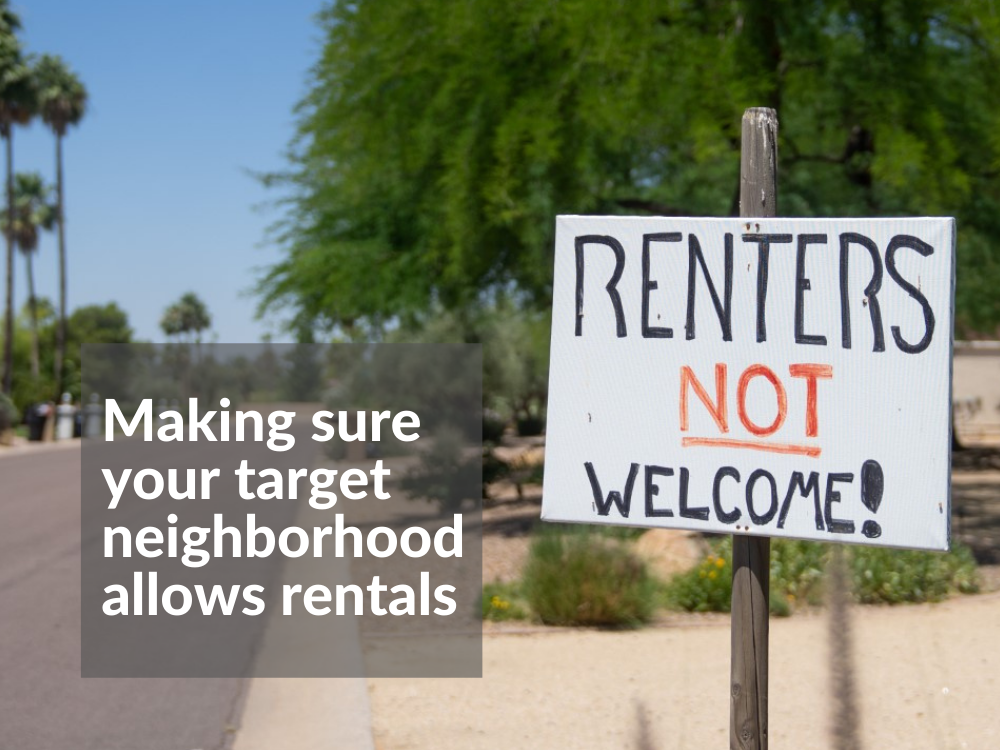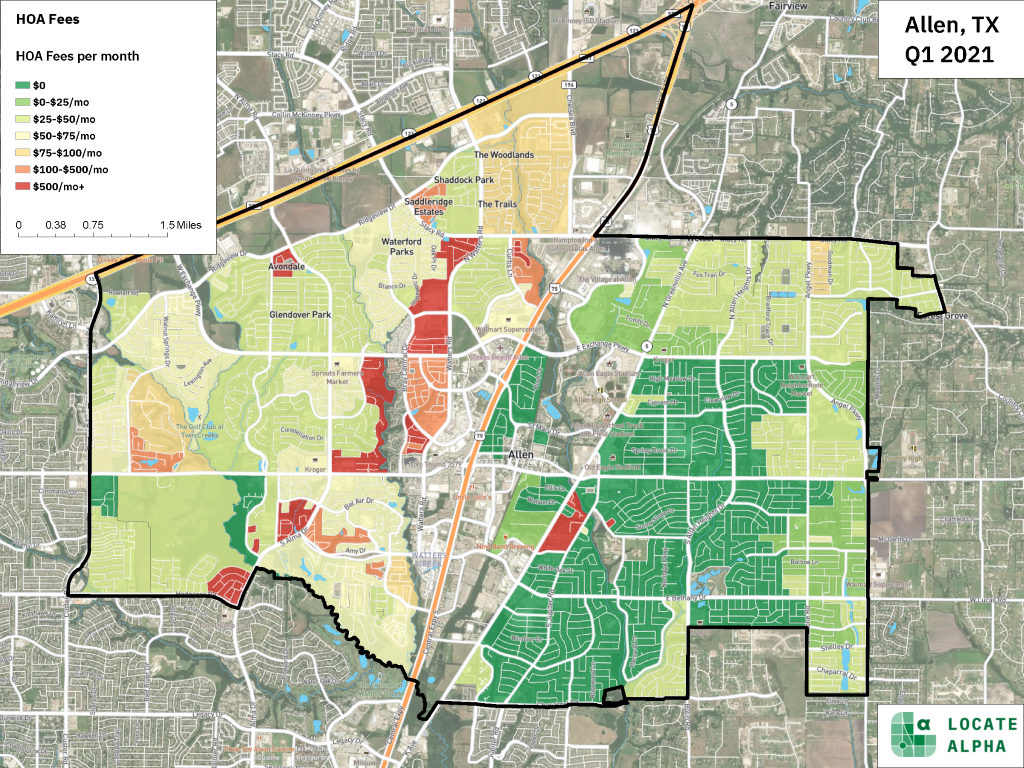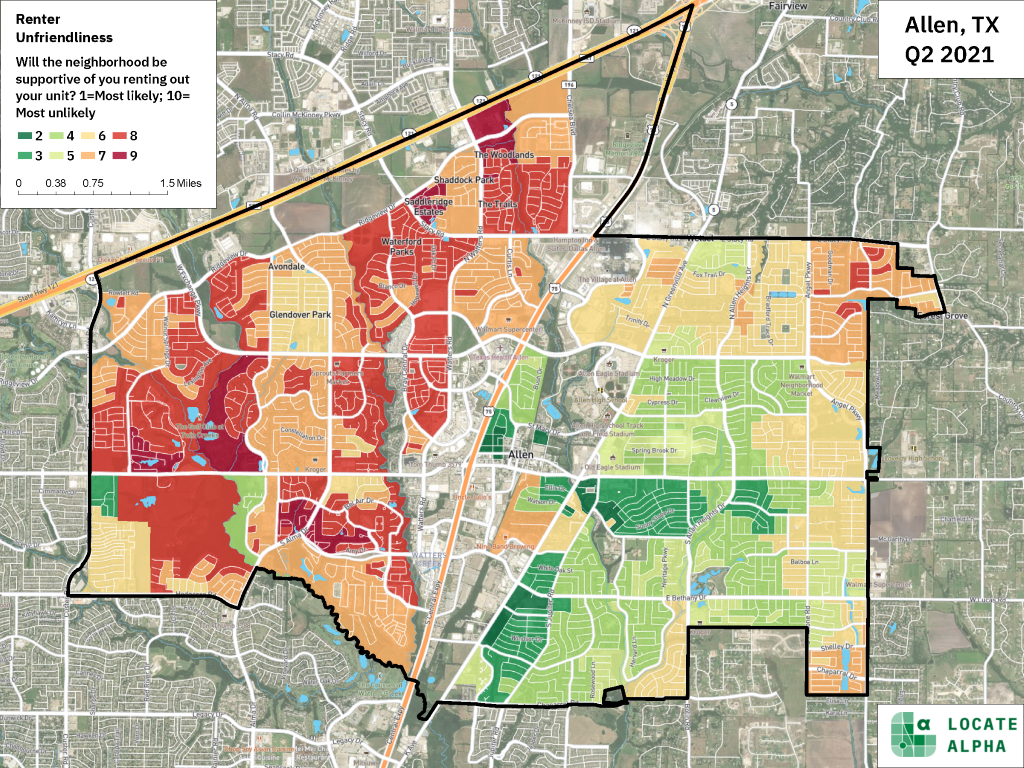A few months ago, I was talking to some real estate agents that work with investors. An important question was raised: “How do we know a neighborhood is going to allow rentals?”
It was not uncommon for an investor to like a particular neighborhood’s investment potential, but when it came down to the details, there was a restriction lurking in the neighborhood covenants that made it difficult, if not impossible, to rent out the property.
Buyer’s remorse
One case was even worse — an investor bought into a neighborhood, only to find a month later that a new resolution was passed that prohibited renters. The neighborhood residents had had enough with renters.
Now, the investor was stuck with a property he couldn’t rent. That means it had to sit there vacant, burning cash as it could not generate an income.
Constitutional or not, until these are successfully challenged in court, these restrictions are a reality.
Is there an easier way to rule out locations unsuitable for rental purposes ahead of time? Or places where, even if a renter ban does not exist today, might in the near future?
Absolutely. We’ve created a solution to this problem called the “Renter Unfriendliness Index.”
Measuring renter unfriendliness
There are two things that we believe to be good proxies for this: homeowners association fees and the percentage of homes renter-occupied.
Homeowners Associations
Generally, it is going to be homeowner’s associations (HOAs) that govern renter-related restrictions through restrictive covenants.
Presence of an HOA is not a bad thing. In fact, it is positively correlated with things like rental growth and appreciation. However, some HOAs are more restrictive than others when it comes to allowing renters.
Higher-priced neighborhoods typically have more restrictions. Also, we believe there is a strong relationship between high HOA fees and a greater degree of restrictiveness, both now and in the future. Therefore, HOA fees are our first useful proxy.
We calculated HOA fees for every single city block by cleaning up large quantities of messy data.
Percentage of renter-occupied homes
The presence of a lot of renters is a good indication that the neighborhood will continue to allow renters. Therefore, a high percentage of renter-occupied homes is our second major indicator.
What it means
The combination of the two things gives us renter unfriendliness. We put them on a scale of 1 to 10, with 10 potentially the most restrictive toward renters.
Generally, a “6” out of 10, or higher is going to indicate some kind of limitation on freely renting out a property in that location. A level of “6” may mean a cap on is possible the number of rental units allowed in the neighborhood, as a percentage of total houses.
No renters allowed
At a “7” or “8”, a neighborhood might set certain limitations such as you can’t rent out the house within the first few years after buying. Or, you have to have lived in the home first for a period of time. At a level like “9” or “10”, there may be even more restrictions.
How can you be sure?
This is a litmus test to help you focus your search but is not absolute. The next step is to review the covenants, conditions, and restrictions (CC&Rs) for the neighborhood.
This is usually a long document that will take some effort to obtain through your agent, and take a bit of time to review. Therefore, before getting to this step, you want to have a relatively short list of properties to take a deep dive on.
Getting caught off guard
That being said, rules change, and our index helps you understand the risk of the rules changing in the near future.
We are working on the ability to call up detailed information on the local HOA, which will also help you with this task from within the platform.
Good luck and happy hunting.



